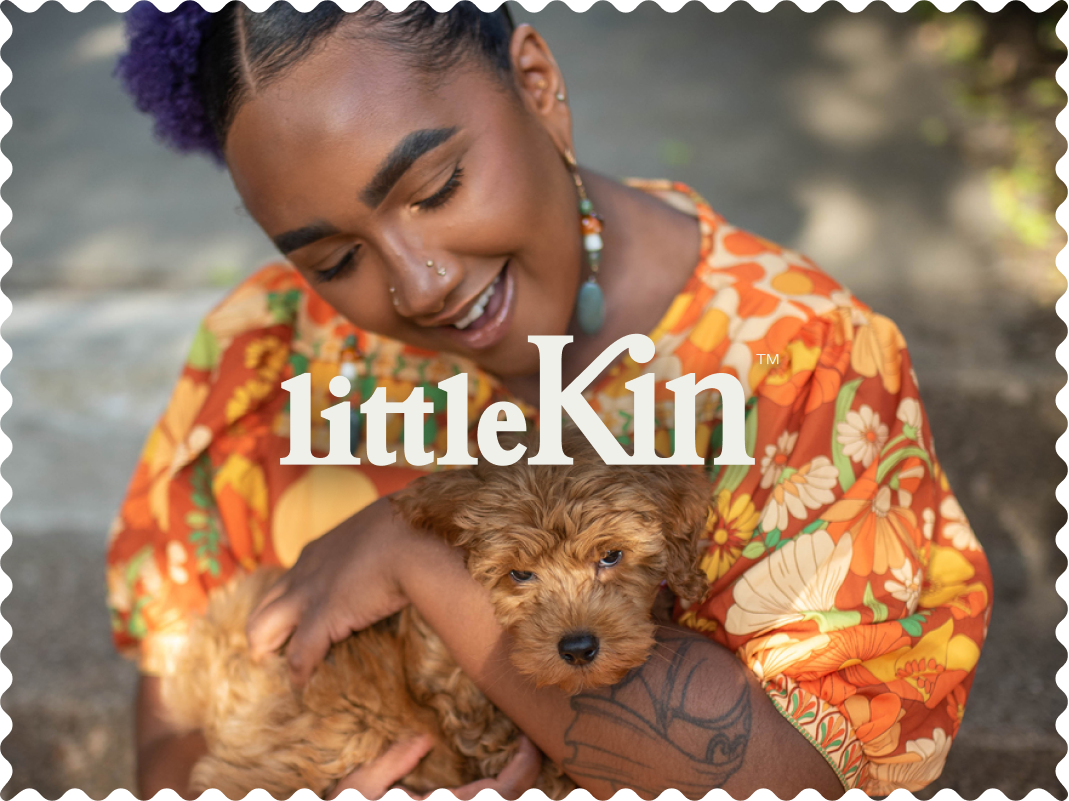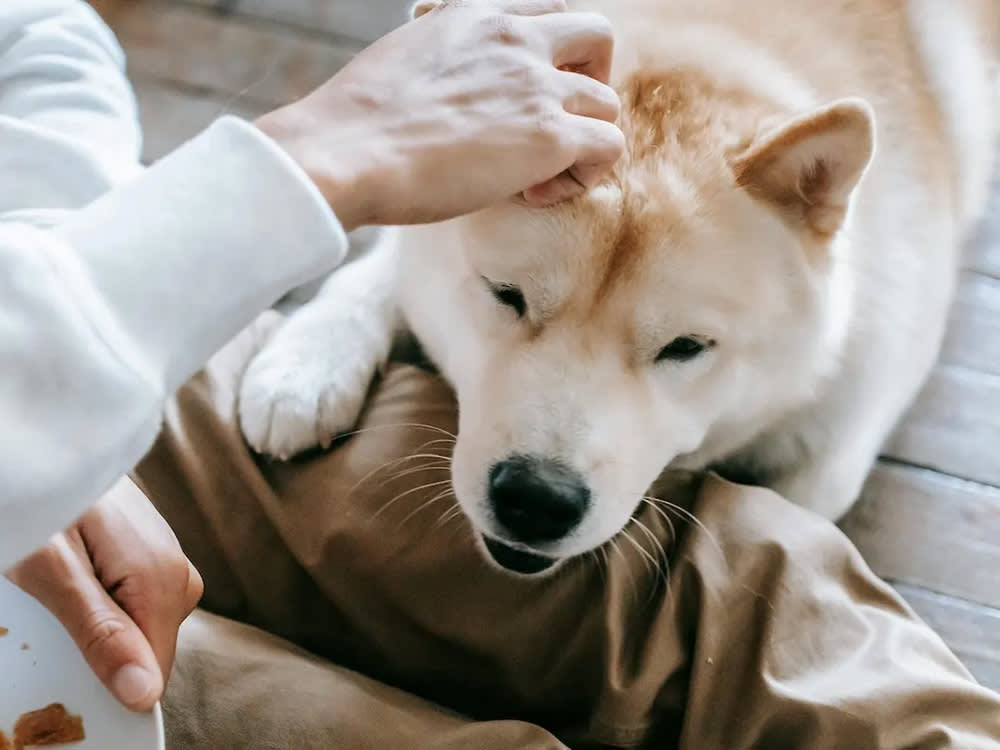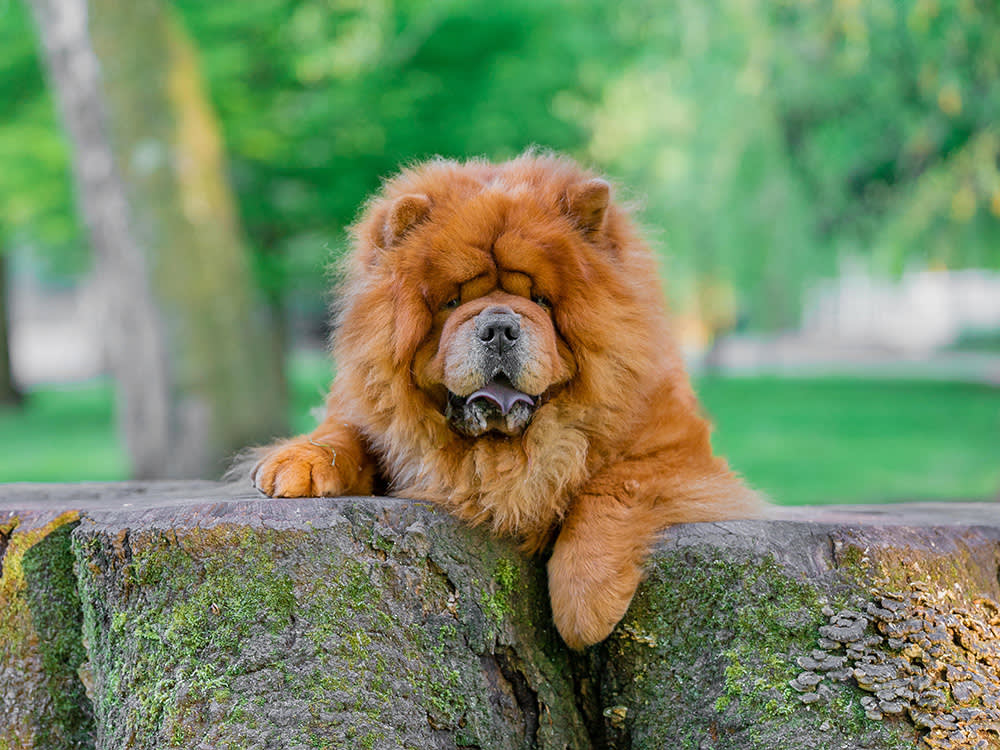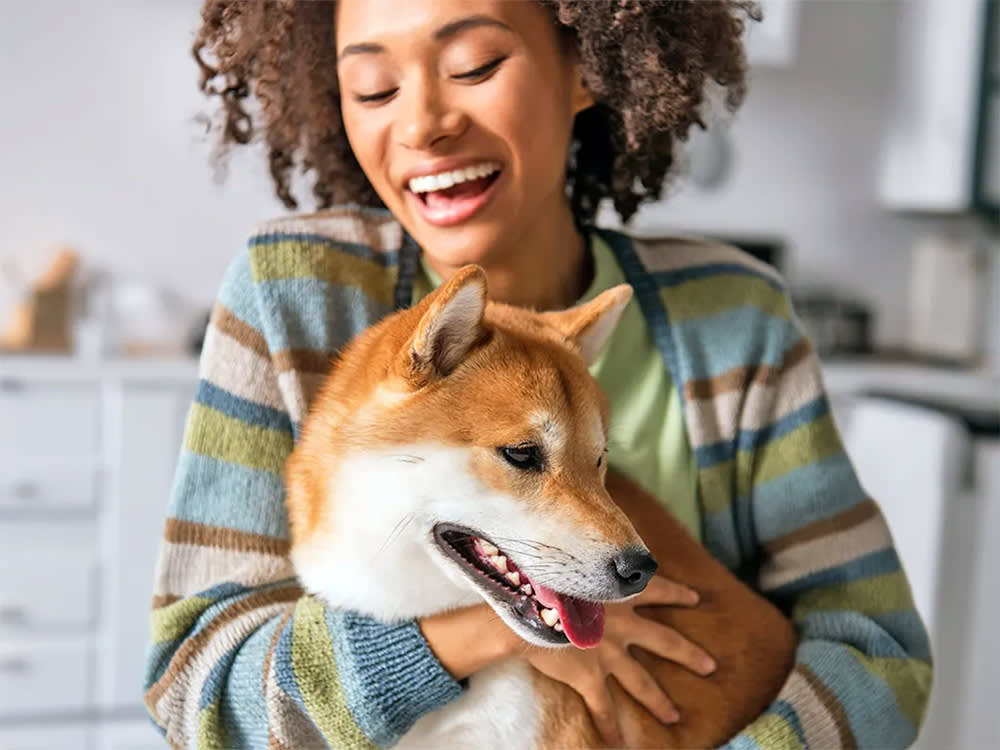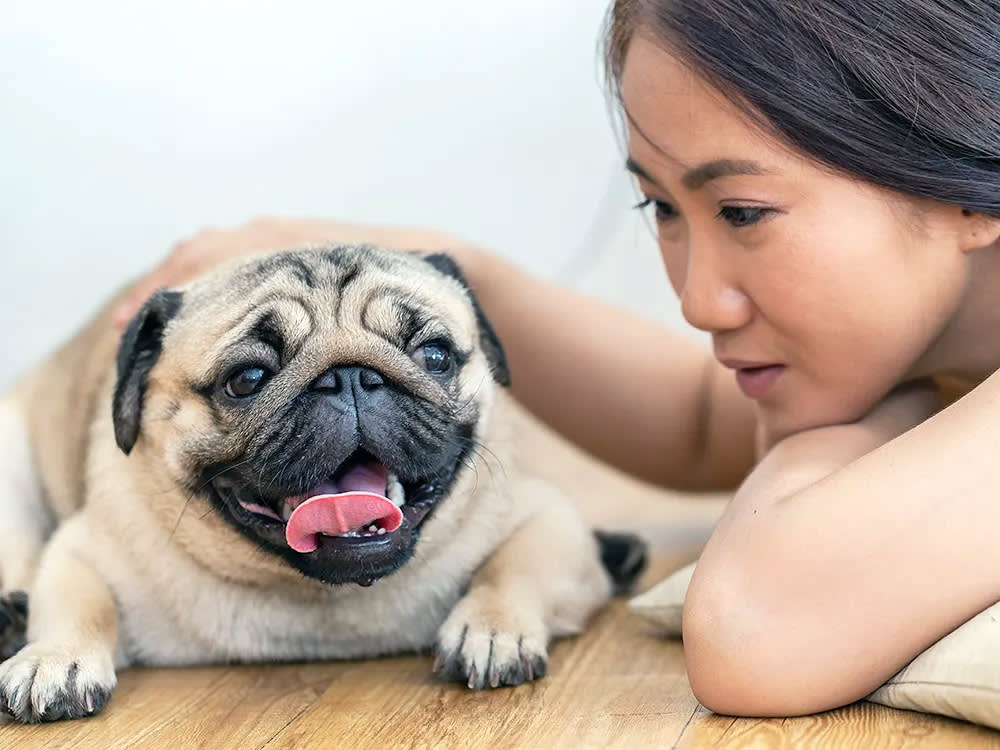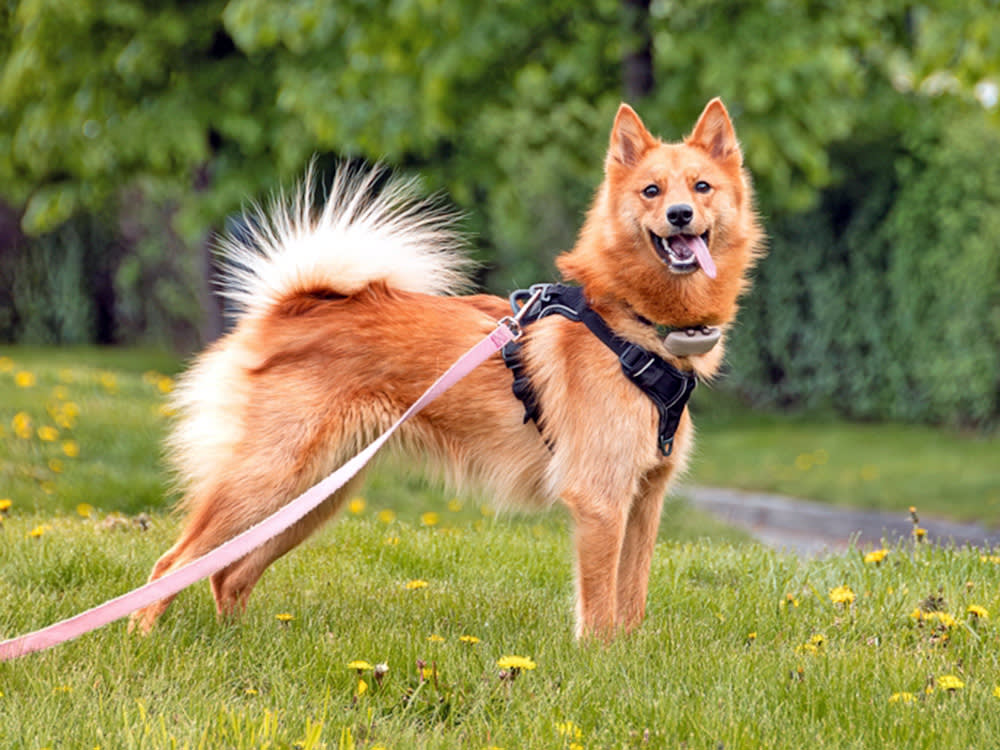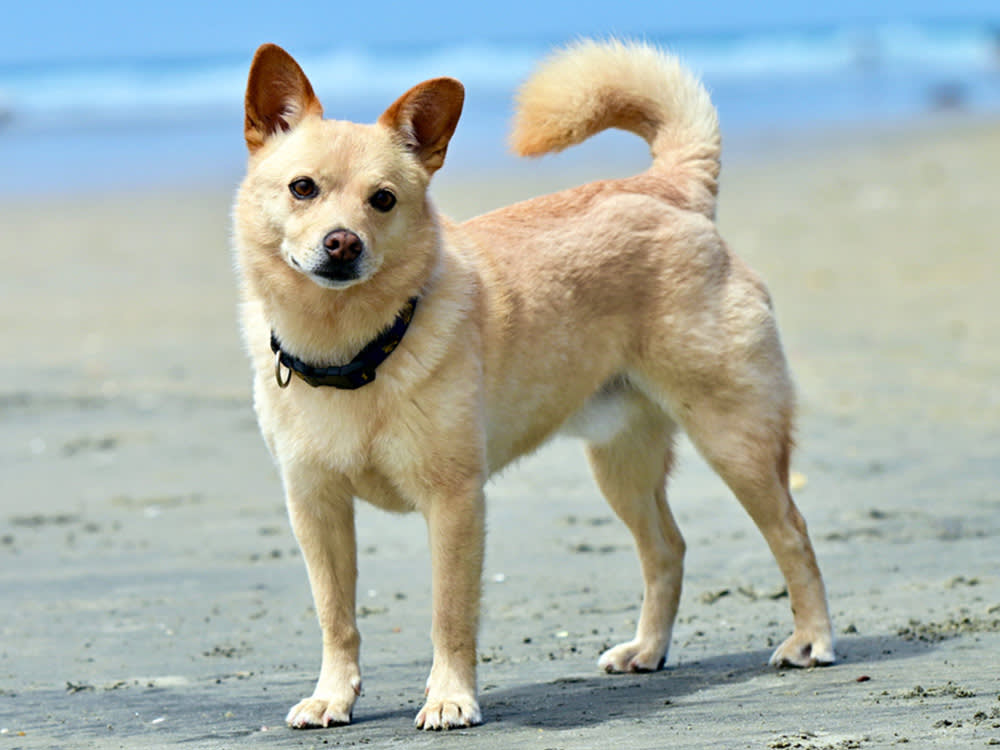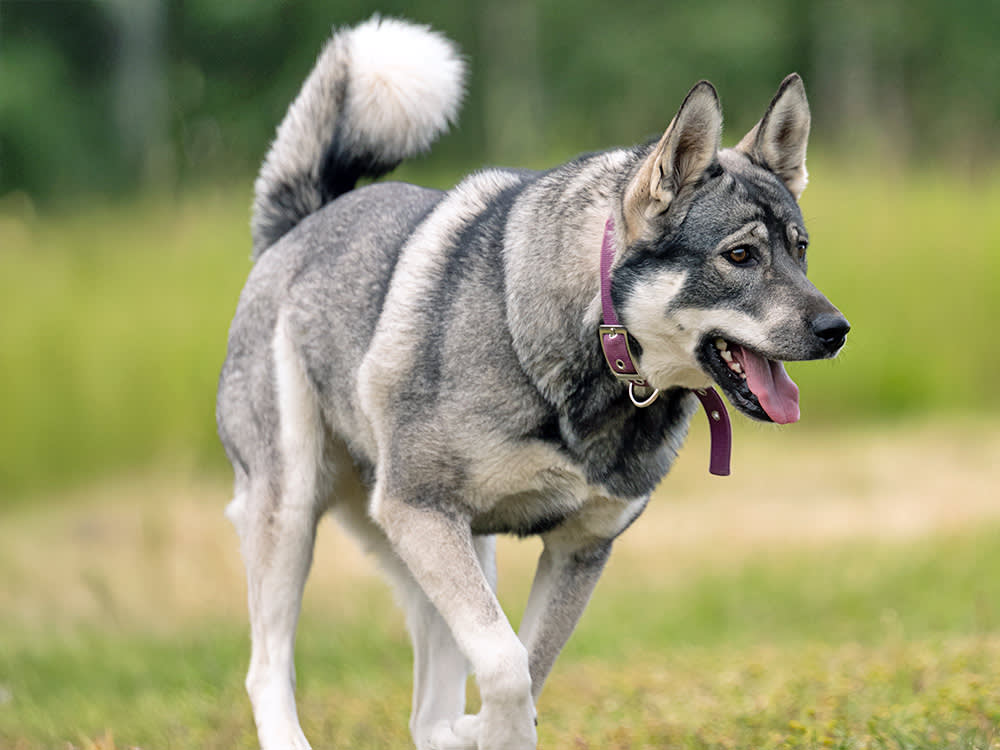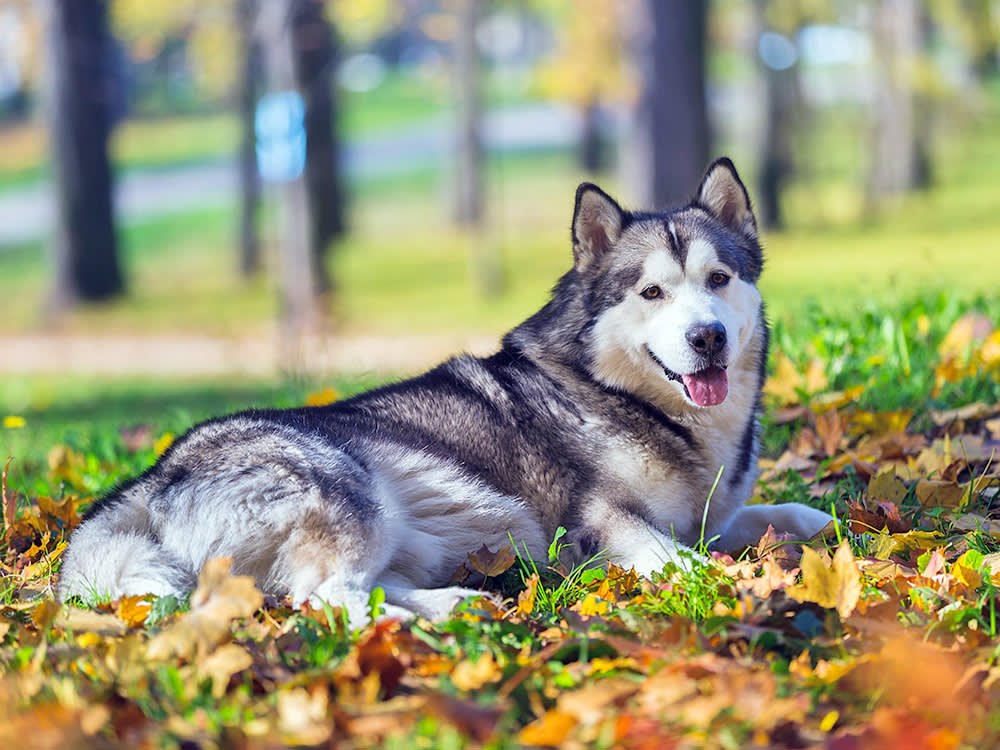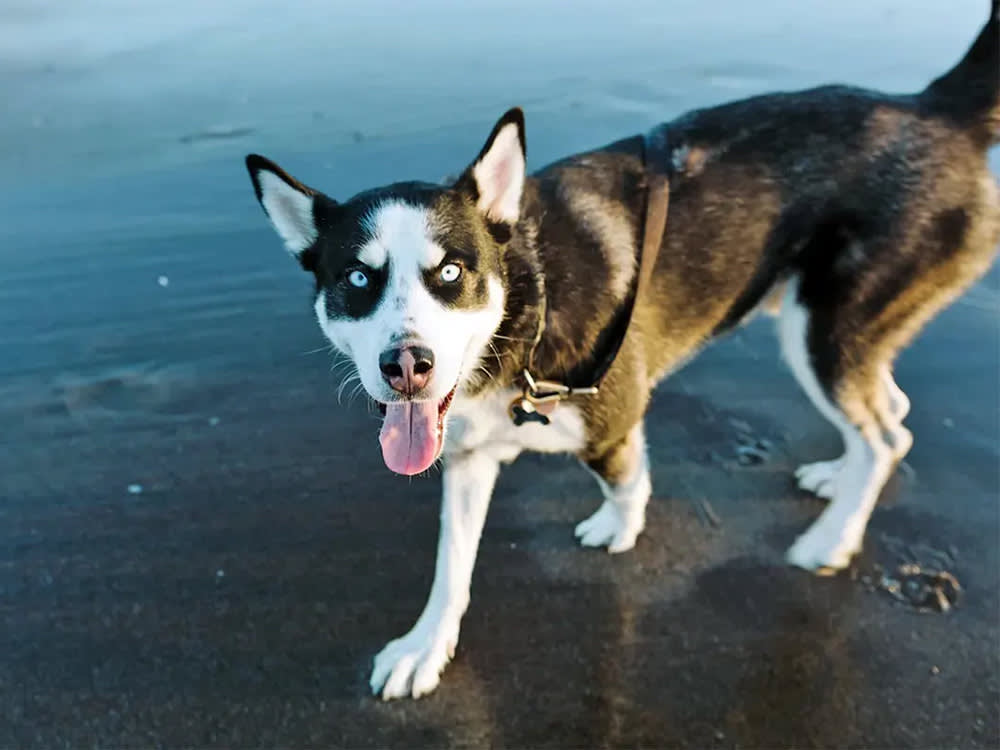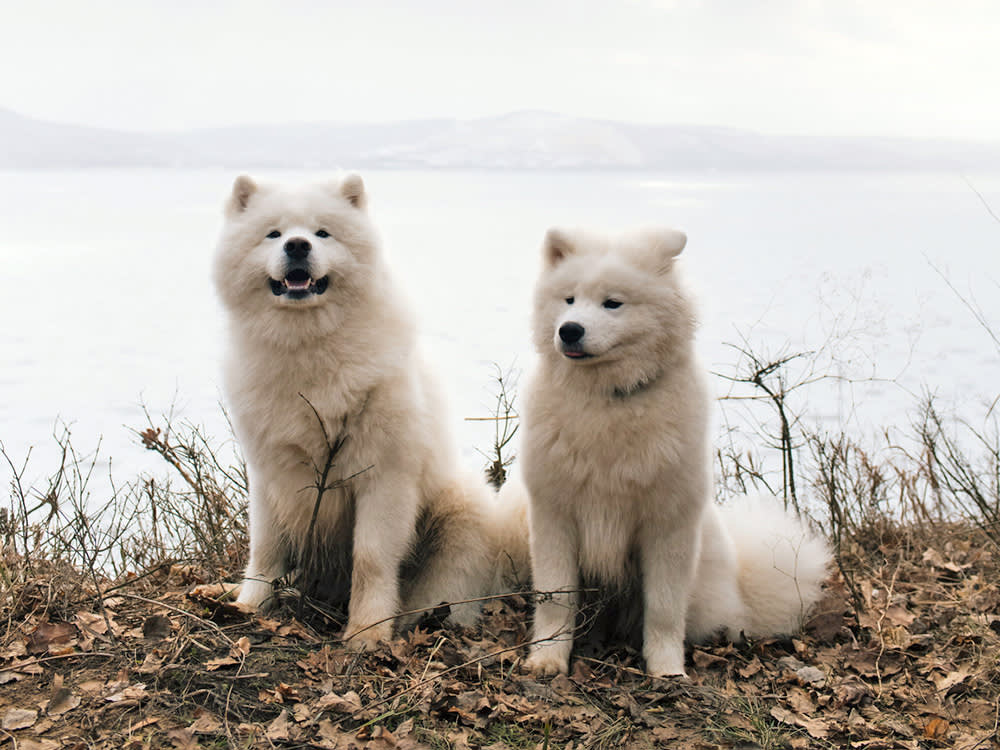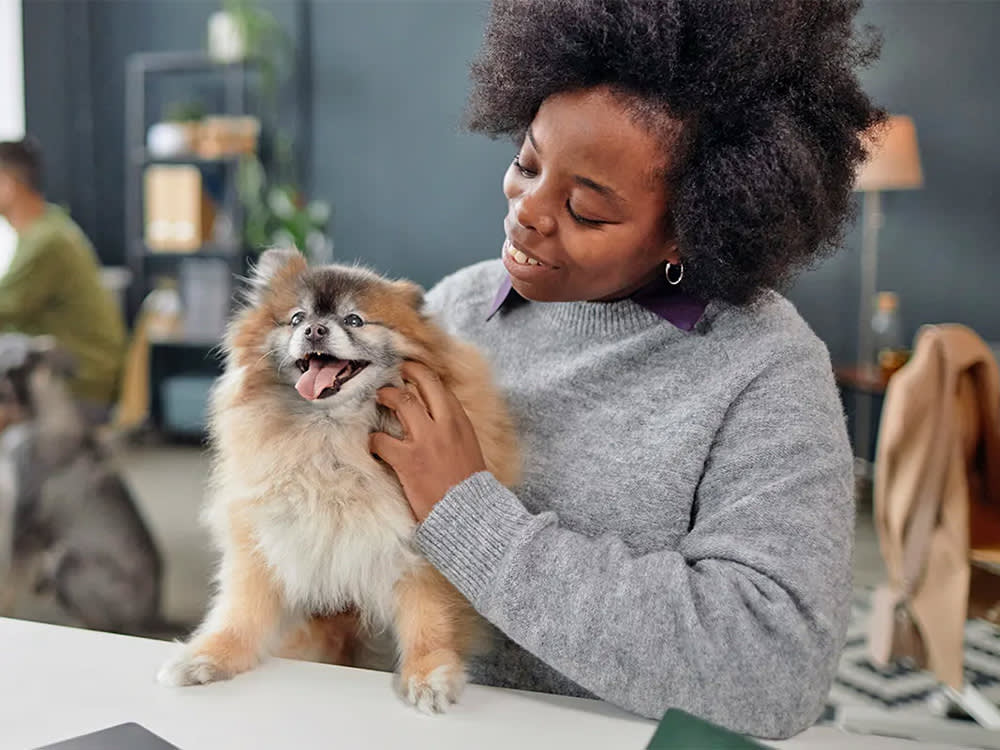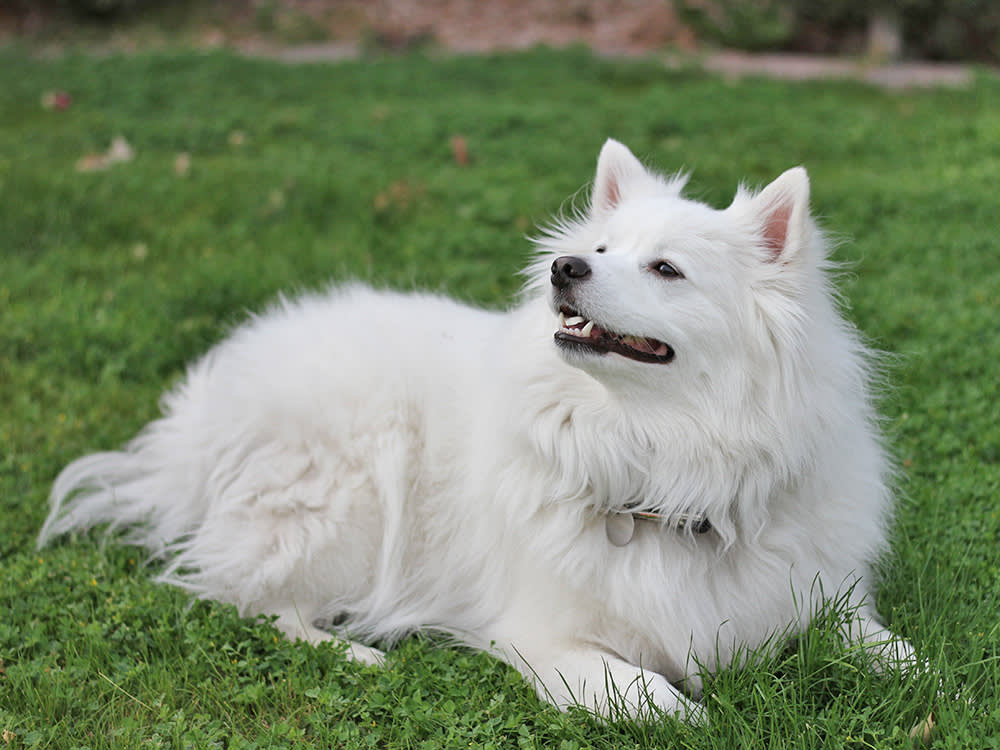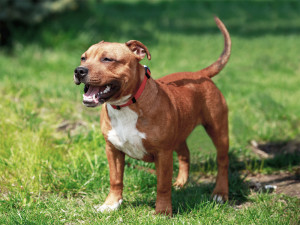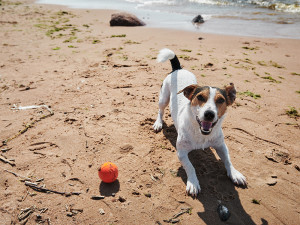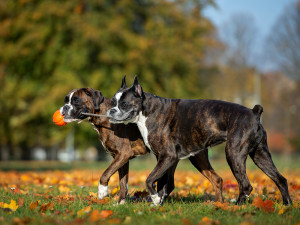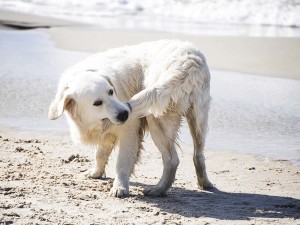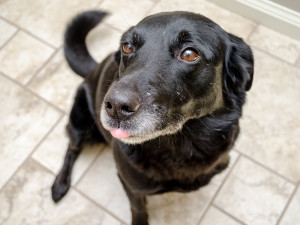15 Dog Breeds Known for Having Curly Tails
And, as a result, being the cutest.
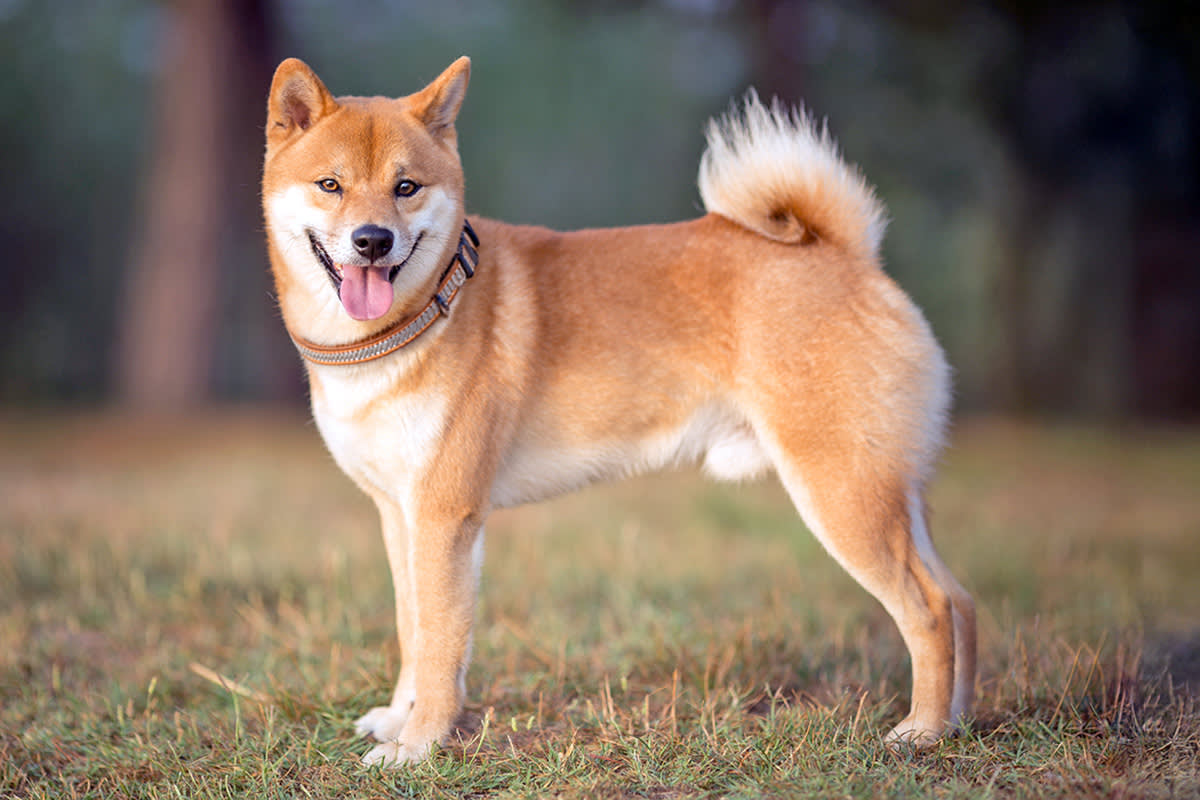
Share Article
OK, so we’re already thankful to evolution for dogs in general, but the cherry on top is definitely breeds with curly tails. Yes, the tails do have actual evolutionary reasons for being there, but I think they also convinced humans to domestic dogs faster. Note: I have no scientific backing for this information. If you want a curly tailed dog, luckily, there are plenty of breeds that have them.
We found 15 breeds of dogs that tend to have curly tails. A curly tail is not always guaranteed, so you should check out individual pups to see if they have curly tails or not. For example, some Siberian Huskies, though they are known as a curly tailed breed, can have sickle-shaped tails that’s more of an arch than a curl. Read more below about why dogs have curly tails.
Akita
This dog breed is known for their magnificent, thick curly tails that elegantly rest on their backs. With a history as protector dogs in Japan, the Akita has a lot of muscle beneath that thick, double-coat of fur. These pups love their families and tend to be quiet, but they can be uneasy around people they don’t know. Akitas also tend not to do well in houses with other pets. They’re not recommended for first-time pet parents and need to be socialized from puppyhood with other animals and people.

Basenji
The Basenji’s tail shape can change based on their mood — seriously. When they’re alert, their tail can resemble a cinnamon roll, but when they’re sleeping or relaxing, it might unspool and just have a slight curl. This African hunting dog is also known for their wrinkled forehead that gives them a slightly concerned expression.
They are so expressive because they’re known as “barkless” dogs — not soundless, though, because they will let out the occasional chortle. This breed is high-energy and requires a lot of exercise. Loyal to a fault, the Basenji bonds closely with their families but can be wary around those outside of their pack.
Chow Chow
The Chinese Chow Chow looks like a mini lion — with the exception of their fluffy, curled tail. The tail is curled and usually sits on their backs. This breed has many distinguishing features, including the fluffy ruff around their necks, face wrinkles and a blue/black tongue. The overall effect is a pup with gravitas. Their personalities usually match their outward appearance; they’re calm, serious, loyal, and a little aloof. The Chow Chow tends to do better when they’re the only pet in the house.
Shiba Inu
This Shiba Inu boasts a fluffy two-toned tail that curls into their backs. This ancient Japanese breed’s name translates as “brushwood dog,” a reference to their history as hunters. Because of their aloof and wary nature, these dogs should be socialized from a young age to help them become great family pets and coexist with other pets peacefully. The small-to-medium-sized pup needs plenty of walks and playtime to be content.
Pug
The Pug has one of the most tightly curled tails of the bunch, looking like a pastry you might find in a fancy cafe. Famous for their large bug-like eyes and wrinkled faces, these silly jokesters were once companions to Chinese and Dutch royalty.
They make for great family dogs, because they’re sweet and affectionate, and can thrive in both country and city life, thanks to their compact size. But because the Pug is a flat-faced breed, they are happiest in a moderate climate. Pet parents need to be mindful of hot outdoor temperatures, because Pugs can struggle to breathe. Their large eyes can also be a source of issues.
Finnish Spitz
The Finnish Spitz looks so much like a fox that some might question where the pet parent picked up their pet. The main giveaway that the Finnish Spitz is not, in fact, a fox is the curly, fluffy, and all-orange tail. Fox tails are straight. These dogs have a history as bird dogs and are quite talkative, having a wide range of vocalizations from the typical bark to yodeling. Affectionate and intelligent, these pups do well with children and other pets.
Norwegian Buhund
Rocking a plumed curly tail that is often on their backs, the Norwegian Buhund needs all of the fur they can get. With a history of guarding and herding livestock and being companions to the Vikings, this cold-weather breed has a dense coat and muscular medium-sized build. These pups can be a little aloof to people they don’t know but are loving to their families and other pets.
Keeshond
The Keeshond, the very furry former Dutch dock dog, boasts a plumed curly tail. This breed is so fluffy though that the tail almost gets lost amongst the dog’s magnificently dense coat. The Keeshond is also known for the “spectacle” marks around their eyes. This pup also looks like they’re smiling, a fact that goes along with their devoted natures. They love being around their families, and anyone really — they tend to get along well with other humans and pets, too.
Norwegian Elkhound
The Norwegian Elkhound looks similar to the German Shepherd—but with a curled tail. This dignified ancient dog breed has been around so long that they were found in Viking burial grounds in 5,000 BCEopens in new tab. In the thousands of years since then, they’re more often employed as herding dogs and pets. Athletic and intelligent, these pups need plenty of exercise and mental stimulation to be happy. The Elkhound is loving but can be wary around other dogs, if not socialized young.
Alaskan Malamute
The Alaskan Malamute has a history of being a hard-working arctic sled dog, so it’s no surprise their tails are curled — they’ve got to stay out of the way! Malamutes look so much like Siberian Huskies that you might have done a double take, but Malamutes are bigger and have at least 25 more pounds on their cousins.
These pups are happiest when they have a job, but when they’re clocked out, they’re happy to spend time with their families. They are pack pups, but they won’t just fall in line. Pet parents need to establish that they’re the pack leader or they’re going to have a hard time controlling their dog.
Siberian Husky
Siberian Huskies can have curled tails, though some might elegantly arch over their backs and not curl inward, making a sickle shape. Their tails curl inward to help regulate their body temperatures. These former sled dogs are high-energy, intelligent, and often sassy and vocal. Prepare to have arguments with your pup multiple times a day. But because they thrive in a pack, they are loving and loyal with children and other pets.
Samoyed
The smiling Samoyed has one of the most impressive curly tails on this list. They resemble a giant cotton ball (this is a compliment!). They are gentle around young children and love to be around other people and animals so much so that this breed can suffer from separation anxiety. Samoyeds hail from Siberia, so they can thrive in cold temperatures (though they do not do well in hot temperatures and should be taken outside during the coolest parts of the day).
Pomeranian
The Pomeranian is a pint-sized puffball with a loosely curled tail. This tiny pup tops out at seven pounds and can often be seen toted around in purses. These intelligent pups are active, affectionate, and love to be the center of attention, a trait that made them a beloved companion of royalty in the past. They master tricks and new understand new cues easily. Pomeranians are a welcome addition to any family but are not recommended for young children who haven’t been taught how to behave around small dogs.
American Eskimo Dog
If you’ve been walking around and see what looks like a mini Siberian Husky, you’re probably looking at a toy American Eskimo Dog. This curly tailed pup is a small-to-medium loving family dog, though they can be wary around other pets. They prefer to be around their families and can develop anxiety if left alone at home too long. This breed can be three different sizes: standard, miniature, and toy.
Tibetan Mastiff
By far the biggest curly-tailed dog on our list, the Tibetan Mastiff can top out at 150 pounds and be more than two feet tall. This powerhouse is a gentle giant to their families, though. They can be territorial when it comes to strangers, so they should be socialized as a puppy. Boasting a thick double-coat of fur, this fluffy magnetic breed has a feather duster of a tail and can overheat easily during the summer.
References
Bisht, Mohit, and Mehak Pal. “Top 10 Dog Breeds with Curly Tails.” News 18. Accessed 19 August 2025. https://www.news18.com/lifestyle/top-10-dog-breeds-with-curly-tails-visual-story-2749210/opens in new tab.
NDTV. “Dog Breeds Known for Their Curly Tails.” NDTV.com, NDTV, 12 Mar. 2025, www.ndtv.com/webstories/feature/dog-breeds-known-for-their-curly-tails-35197opens in new tab. Accessed 19 Aug. 2025.
Rohman, Carrie. “Curly Tails and Flying Dogs: Structures of Affect in Nick Abadzis’s Laika.” Animal Comics: Multispecies Storyworlds in Graphic Narratives. David Herman, ed. London: Bloomsbury, 2018, 119-138. https://ldr.lafayette.edu/concern/publications/dz010q53vopens in new tab.
Santiago, Luisa J. “Dog Breeds - My Top 10.” Cuny.edu, 2025, sw01.bcc.cuny.edu/luisa.santiago/dogs.htmlopens in new tab. Accessed 19 Aug. 2025.
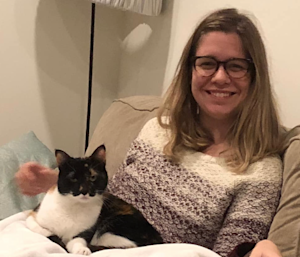
Alicia Kort
Alicia Kort is a writer and editor living in Brooklyn. Her work has appeared in Esquire, InStyle, Apartment Therapy, The Kitchn, Parade Home & Garden, Newsweek, Interview, Brooklyn magazine, and more. In her free time, she runs, reads, and spends time with her dog-nieces, Maya and Lady, and her cat-niece, Pepper. In her work, she focuses on pet behavior, pet-friendly spaces, and the lifestyle commerce space.
Related articles
![Staffordshire bull terrier wagging it's tail outside.]()
Dogs May Wag Their Tails Because Humans Love Rhythm, New Research Says
Science is getting to the bottom of why dogs are such tail-talkers.
![Dog playing with orange ball toy at the beach on a sunny day]()
A Tail-Wagging Dog Isn’t Always a Happy Dog
This body language is not as simple as you probably think.
![Two boxer dogs playing with a ball together in the park]()
Docked Tails Play a Role in Dog Communication
Looks aren’t everything, but they can talk.
Why Does Your Puppy Chase His Tail?
And when to talk to the vet.
![Dog biting his tail on a summer Baltic seashore.]()
Understanding Limber Tail Syndrome: Causes, Symptoms, and Treatment
Seeing your pup’s normally perky tail go limp can be unnerving, but it’s really nothing to panic about.
![Black dog sitting on tiled floor]()
What’s Better Than a Tail Wag? A Circle Wag
Also called the “propeller wag” or “helicopter tail”, this behavior is a surefire way to tell that a dog is happy.
